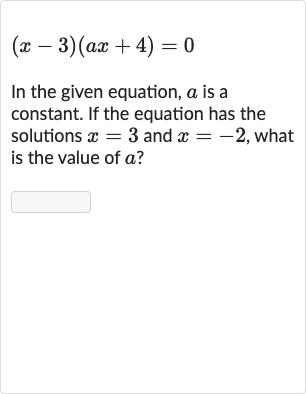Full solution
Q. In the given equation, is a constant. If the equation has the solutions and , what is the value of ?
- Identify Solution for : We are given that has solutions and . We will first use the fact that is a solution to find a relationship between and the constants in the equation.Substitute into the equation:Since multiplied by any number is , this does not provide information about . This step confirms that is indeed a solution.
- Utilize Solution for : Next, we will use the fact that is also a solution to the equation. Substitute into the equation:Since the product is zero, one of the factors must be zero. Therefore, we set the second factor equal to zero to find :
- Solve for a: Now, solve for a:Add to both sides:Divide both sides by :

